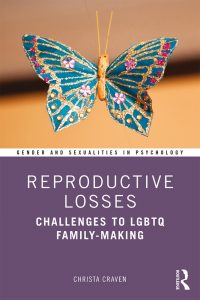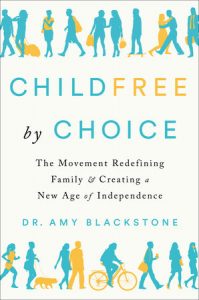The Gender Matters Online Symposium (.pdf) keynote essay was prepared for the Council on Contemporary Families by Barbara J. Risman, University of Illinois-Chicago. Risman is co-editor, with Carissa Froyum and William Scarborough, of the recently released Handbook of The Sociology of Gender (Springer 2018), which includes forty chapters examining new research on gender diversity and change on issues ranging from the gendering of childhood to the impact of gender on work and parenting to changes in sex for the over-sixty population. This essay summarizes some of that research, along with Risman’s findings in Where the Millennials Will Take Us: A New Generation Wrestles with the Gender Structure (Oxford, 2018). Risman’s takeaway: Gender matters, now more than ever, because it structures every aspect of life. And we benefit from knowing how it matters.
Questions.
You cannot pick up a newspaper today without seeing debates about whether masculinity is in crisis, whether women are “opting out” of work or choosing work over motherhood, and who can use which bathrooms. Why are so many young people today dissatisfied with familiar and traditional genders? Are they rejecting the stereotypes that demand boys to be tough and girls to take care of everyone’s feelings? Are they rejecting the very categories of male and female, and the conventional demand that you can be only one or the other? Or are the debates just “fake news” at a time when most people perfectly happy with traditional gender categories?
Answers: The undisputed changes.
Some things are pretty clear cut. First, women are never going back to the home. The outward movement of women into the work force since the early 1970s has leveled off for now, but mothers are far more likely to work for pay than in the past; they return to work earlier after having a child; and they work for longer periods of their lives. In my in-depth interviews with 116 Midwestern Millennials for Where the Millennials Will Take Us: A New Generation Wrestles with the Gender Structure, almost no one, not even the most devoutly religious respondents, told me that mothers belong at home with their children.
Second, feminism is no longer just a women’s movement. The General Social Survey has been asking questions about people’s support for gender equality since the mid-1970s. As of the latest survey, in 2016, support has reached an all-time high, and the gap between men’s and women’s opinions has sunk to an all-time low, with most of the change due to men’s “catching up” with women in their support for equality. Many men I interviewed were every bit as egalitarian as the most feminist women I talked to, and several were far morefeminist than most women. A substantial portion of female and male feminist “innovators” entirely reject gender expectations and stereotypes.
Third, nearly all young adults today consider themselves libertarian about gender. They refuse to judge people who are different from themselves in terms of gender identity or expectations. Several male respondents told me that although they would never wear nail polish, they think other men should be free to do so without harassment. Even those very religious respondents who believed that men should have more authority than women in families also believed that women and men should be equal at work.
Disputed—or at least unfamiliar—changes from the view of older generations.
While support for gender and sexual equality is now more prevalent, views of gender and sexuality have become more complicated. Millennials are increasingly supportive of transgendered individuals. Some Millennials reject any gender binary at all. These “genderqueer” respondents do not want to switch their sex category—neither biologically nor legally. They reject the belief that they must be gendered at all, even in how they adorn and inhabit their body. Some genderqueer Millennials are content to identify as a sex category (e.g. as female) but reject the gender category woman. Others just skip categories altogether. When Washington State recently allowed people to check an X option instead of male or female on their official forms, they noted that this option could be used by people who identified as ”intersex, amender, amalgagender, androgynous, bigender, demigender, female-to-male, genderfluid, genderqueer, male-to-female, neutrois, nonbinary, pangender, third sex, transgender, transsexual, Two Spirit, and unspecified.” These categories encompass very different people, with distinct identities, behaviors, and values. When it comes to gender and sexual identity, we have gone far beyond a mere 50 shades of gray.
What research tells us about how the new diversity matters.
To understand this new diversity, we need to talk about exactly what the word “gender” means. In the Handbook of the Sociology of Gender (co-edited with Carissa Froyum and William Scarborough), 65 scholars analyze specific ways that people are doing – and undoing – gender, and report on how it matters. Unless otherwise noted, the research evidence I cite here is from the Handbook.
Let’s start with new vocabulary, and how it matters. Sex is the presumably biological category you were labeled at birth, male or female. I say presumably because the biological categories are not always clear. Some children are born with internal female organs, but an extended clitoris that appears to be a micro-phallus. Even intersexpeople, who have both male and female body parts, are usually, if mistakenly, labeled male or female at birth. The very definition of biological facts is shaped by an assumption that there are two and only two possible sex categories. But even when children meet the biological definition of male or female, sometimes that sex category doesn’t fit with their identity, and they reject it. Transgender people reject the sex category they were raised in, and identify as male or female despite their childhood label and rearing. As mentioned above, genderqueer people reject their categorization as women or men: Rather than identify as the other category, they reject categories, and identify as between the binary. At this moment in time, the language for describing gender is as fluid as gender itself has become.
Biology does not determine all.
All this shows that gender is based on a lot more than sex organs or biology. Those who are skeptical about gender equality movements often argue that men and women evolved biologically to exhibit different kinds of behaviors that are driven by their genetic heritage. Yet genes don’t work that way. To wit: the new field of epigenetics shows how genes are triggered by environmental factors and lead to different outcomes in different contexts. In their chapter for the Handbook, Davis and Blake show that while bodies play a role in people’s sense of self, most of the differences social scientists can measure between women and men are not choreographed by genes or hormones. Hormones exist in the body, but adult experiences shape hormones as well as vice versa. For example, winning a competition can raise testosterone levels, while taking care of a baby lowers it. This is true for men and women. Biology simply doesn’t explain how different gender identities are created or how the workplace is organized and jobs are distributed according to gender. Taking care of preschoolers in a nursery requires more energy, upper-body strength, and ability to respond rapidly to emergencies than parking cars at a hotel, yet the former jobs are typically held by women and the latter by men. Guess who gets paid more?
How we train boys and girls into gender.
As symposium and Handbook contributors Gansen and Martin show in “Not Just Kid Stuff: Becoming Gendered,” boys and girls are systematically raised to become different kinds of people. This task involves parents, peers, media, and often even daycare center staff. Raising girls who love dolls and boys who love vehicles can be as obvious as steering girls to the kitchen and boys to the trains, but the socialization that creates feminine girls and masculine boys is often nowadays far less obvious. Girls are shamed for being “unladylike” while boys are shamed for being “unmanly.” Female-bodied children are taught to “throw like a girl” while male-bodied children are corrected when they do so.
Kane’s Handbook article, updated in the symposium’s “Parenting and the Gender Trap,” illustrates how when partners become parents they reproduce such gender socialization and pass it on to the next generation. Despite mothers and fathers both working for pay outside the home, mothers often continue to manage the household and provide more nurturing for children. And so the circle continues: By just watching their own parents, many children learn that it is women who take care of other people. Kenly Brown’s research on alternative schools (e.g. schools for children who cannot attend conventional ones) in “Gender, Race, and Girls in California’s Alternative Schools” suggests that such gender socialization and expectations interact in complex ways with racial stereotypes, however, contributing “to the isolation of marginalized students, particularly low-income Black girls, who are the most vulnerable to violence and neglect in their interpersonal lives.”
Doing gender 24/7.
Gender is not just about how people are raised. In everyday, routine activities, gender organizes people’s lives even more directly. People use their gender training to display and claim they are male or female, and they watch for cues to assess the gender of others. We don’t really judge someone’s sex by inspecting naked bodies. Instead, we assess other people’s gender identity by their dress and behavior. Everyday interaction looks natural, but it is highly choreographed. People are nearly all evaluated by how well they “do gender.” People expect you to “act your age” — and your gender. Parents and romantic partners are expected to do and be different things according to whether they are male or female. We assume mothers, wives, and girlfriends will provide emotional comfort, and that fathers, husbands, and boyfriends will be physically assertive, whether as protectors or aggressors. And if real people don’t conform to gender stereotypes, their public images are often reworked to do so. For example, sociologist Philip Cohen found that images of Princess Diana showed her six inches shorter than Prince Charles, despite the fact that they were actually the same height.
The ideal worker and your unconscious.
Fisk and Ridgeway’s Handbook essay notes that people instantly and unconsciously sex categorize each other, and in doing so, they invoke deep cultural beliefs without even knowing it. Men are seen as more effective as leaders, accorded higher status than women, and given more influence in group settings. But gender matters beyond these stereotypes because we have quite literally built schools, workplaces, and the economy around traditional genders. Gender matters not just as identity or ideology, but as a core component of how our social world is organized. Just as every society has an economic and political structure, so too every society has a gender structure.
Some people may operate in social contexts where they are evaluated more positively if they reject doing gender traditionally, but the expectations remain in both conservative and progressive settings. And whatever people believe, all must adapt to organizations and institutions that are based on the belief that “ideal” workers are entirely and uniquely committed to the business at hand, which rewards the typically male life course and the historically masculine privilege of having a domestic wife. Women who return to their paid labor a few weeks, or months, after adopting or birthing a child are commonly asked how they can bear to leave their infant, while fathers often stigmatized if they do not increase their efforts to earn a larger paycheck.
When one thinks about gender structures encountered every day, the world of work is an obvious place to start. Everyone needs to earn a living, or lives with someone who does, and so workplaces are significant in everyone’s life. The most obvious way gender structures work is by assuming that the “ideal worker” does not experience pregnancy and has no moral or practical responsibilities for taking care of anyone but himself (and perhaps has a wife to do even that). Any organization that assumes workers are available from nine to five (or often, nowadays, 24/7) over a lifetime, has baked gender expectations – and gender discrimination — into its very DNA.
This is a caregiving penalty, and it translates into a motherhood penalty. Even so, this is not the only way workplaces disadvantage women. Wynn and Correll’s “Combating Gender Bias in Modern Workplaces” shows how stereotypes limit women’s success in the corporate sector. Women and men hold stereotypes that men are more competent and women more nurturing. When it comes to hiring and promotion, those biases hurt women’s chances by increasing the scrutiny women face. On the one hand, highly competent women are seen as less likeable. On the other, if they are mothers, employers often believe they will not be committed to their work. Chavez, in “Gender, Tech Jobs, and Hidden Biases that Make a Difference,” notes that even in industries where women and men are equally likely to be hired, women are often hired for different reasons than men. Women are hired for their “people” skills, for example, rather than their technical ones — and this may decrease their chance of promotion.
These biases not only decrease women’s workplace opportunities; they increase men’s. In effect, unconscious bias and workplace family policies are affirmative action policies for men — especially white men with wives. Chavez reports how gender stereotypes do not operate entirely the same for Blacks, Whites, Latinx, and Asians. White men with wives are the primary beneficiaries of this organizational affirmative action for men while men of color often are not.
Public policy.
Workplaces are not unique in having been built from the ground up with gender expectations embedded in their very design. Even apparently gender-neutral governmental regulations often incorporate gendered assumptions into their foundation. In her research on immigrant families, Banerjee (“Housewife Visas and Highly Skilled Immigrant Families in the U.S.”) shows that the visas for skilled workers were designed long ago for men with housewives. Skilled workers’ spouses were admitted to the United States on “dependent visas,” because they were expected to be stay-at-home wives who neither needed nor deserved work permits. While that policy was jettisoned by the Obama Administration, it has recently been re-enacted. The result, Banerjee shows, is that wives of male high-tech workers — and husbands of female nurses – are forced to be economically dependent partners, and this negatively affects their families. In the future, it may disadvantage America, as new talent will choose other more family-friendly destinations. While gender inequality affects the experience of migration for the professional workers Banerjee studies, the high rate of migration globally has gendered consequences for workers at every level. As Choi, Hwang, and Parreñas report in “Separating Migrant Families, as Practiced around the Globe,” men and women migrate internationally for paid work at almost the same rate, but family separation leads to new inequalities: Women still solely face the expectations to hold the family together while they also provide financial support while men are considered good fathers for their remittances. Women even face shaming for leaving the caretaking work for their own children to other women left back home.
Seemingly family-friendly work policies remain gendered. In some countries, such as the Netherlands, women receive 16 weeks of paid maternity leave, while men get two days. The law still assumes–and ensures–that mothers take more responsibility for children than fathers. In that country, the right to work part-time has created a society where women are assumed to be on a mommy track, and the glass ceiling is really a glass floor that keeps women on a lower level because they never get—or are expected to have—intensive work experience.
Reflections and resolution.
Overall, much work is left to do before we have a society where gender is not embedded in much of the law and most of the social institutions, along with the cultural beliefs that legitimate them. In fact, given the accumulating research highlighted in the Handbook of the Sociology of Gender, I believe that as long as we operate under a gender structure that assumes a male-female binary, none of us will be free from the historical constraints of institutionalized sexism, with its assumption that there are only two categories, and that those are opposites, conferring unequal capacities and justifying unequal treatment. For human beings to develop fully as effective rational actors and warm nurturing human beings, we need a world where the sex category assigned to babies won’t dictate how they are raised or what we expect from them as children, teens, or adults.
This is why sociologists spend so much time studying gender. As Judith Lorber has written, the paradox of gender is that we must make it very visible before we can begin to dismantle it. My utopian goal is to eliminate the gender structure entirely. While not all feminists agree–not even all the authors in the new Handbook–I believe that full equality demands we create a world beyond gender.
In the meantime, however, the research recounted here reveals progress and points to ways in which can continue the march toward gender equality. Most Americans now believe that men and women should have equal rights and responsibilities both in public and private spheres. My own recent research with Ray Sin and William Scarborough suggests that the belief that women belong in the home and men in the public sphere is now nearly extinct. That indeed is a major feminist accomplishment.
There is other good news as well. Velotta and Schwartz (“The Push and Pull of Sex, Gender, and Aging”) show us that women and men have more romantic and sexual options throughout the course of their lives than in the past, despite obstacles posed by the continued problems of ageism and sexism. In the world of work, the articles by Wynn and Correll and Fisk and Ridgeway profile practices that reduce the impact of gender bias in hiring and promotion, which in turn breaks down sexist stereotypes. Recent data suggest that every generation of men is doing more child care than before, a process that accelerates when governments adopt “use it or lose it” paternity leave. And as men in highly visible roles take parental leaves and share caretaking, this further erodes cultural stereotypes about masculinity. Our Handbook discusses in more depth the challenges and opportunities facing the movement for gender equality.
 Although the “gayby boom” that began in the 1990s ushered in many new possibilities—socially, legally, and politically—for lesbian, gay, bisexual, transgender and queer (LGBTQ) families, attention to the reproductive challenges they face has not kept pace.
Although the “gayby boom” that began in the 1990s ushered in many new possibilities—socially, legally, and politically—for lesbian, gay, bisexual, transgender and queer (LGBTQ) families, attention to the reproductive challenges they face has not kept pace.



